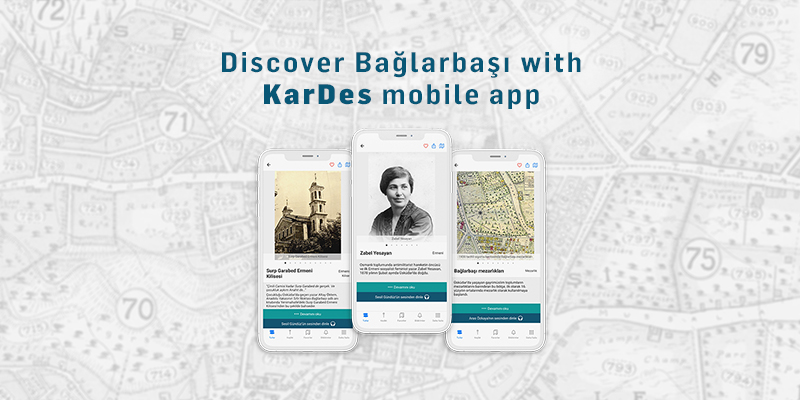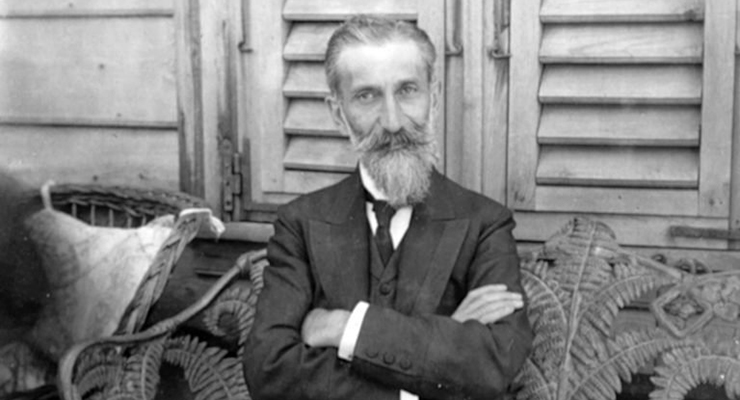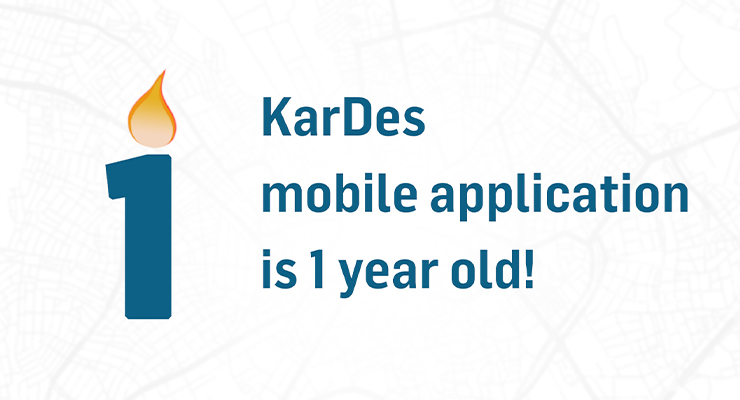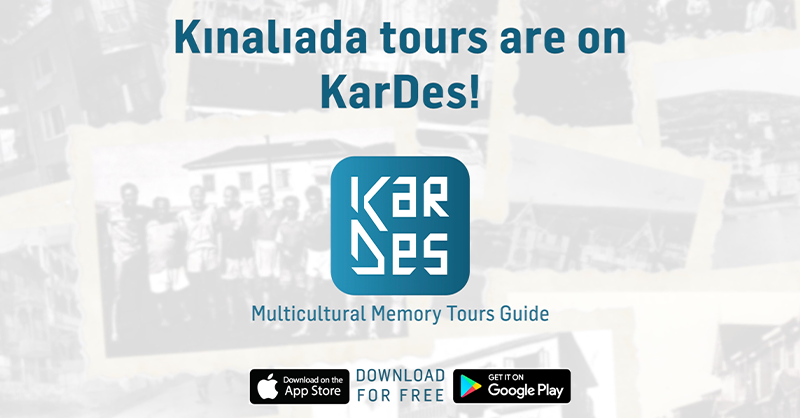
We have compiled some of the content from the Bağlarbaşı tour, which has been recently added to KarDes mobile application. To discover more, you can download the app for free: onelink.to/KarDes
The name of the Bağlarbaşı neighborhood arose from the vineyards surrounding a monastery in the 17th century, which extended from Surp Garabed Church across to the Armenian and Greek cemeteries. Known for its vineyards and gardens and educational institutions, as mentioned in Zabel Yesayan’s books, the district included Armenian, Greek and Muslim neighborhoods. In the 16th century, Armenian craftsmen from Van, Muş and Kayseri were brought here to work on the construction of buildings such as the Mihrimah Sultan Mosque and the Çinili Mosque complex in Üsküdar and established their own neighborhoods here. In time, two of the largest Armenian churches on the Anatolian side, Surp Haç Church and Surp Garabed Church, and many well-established schools were founded here.
Although the neighborhood has changed over time, you can discover the stories of the people who lived there and the many structures that are still in place with Bağlarbaşı tour.
The memory tour lasts an average of two hours and is narrated in Turkish by Sesil Gündüz, Aras Özkaya and Daniel Sıvacıoğlu, and in English by Simon Johns.
|
Berberian School The Berberian School, which operated in Üsküdar for many years, was one of the finest schools of the 19th century, attended by the most talented Armenian students, with a multilingual curriculum and activities. Opened by Reteos Berberian, the school offered education in scientific, literary, commercial and pedagogical subjects, based on the field they hoped to specialize in. After Berberian’s death in 1907, his sons Onnig and Schahan took on the mantle of running the school. It was forced to suspend its activities with the start of World War One, then resumed in 1919 but failed to achieve its former caliber in the post-war environment. In 1924, the school moved to Cairo, but closed 10 years later due to financial problems. The Berberian School’s quality of education and the success of its graduates made an indelible mark on the period. The building does not survive to the present day. According to a map of the period, the school’s location corresponds to a spot north of Üsküdar American Academy. Among notable persons who passed through the Berberian School were the poet and doctor Ruben Sevak, the writer Shahan Shahnour, the educator Hovhannes Hintliyan, the journalist and writer Yervant Odian, the poet Mateos Zarifian, the sculptor Hakob Arabyan and the musician and painter Dikran Çırakyan.
|
|
Surp Haç Armenian Church and School The largest Armenian church on the Anatolian side of Istanbul, Surp Haç Armenian Church is located on Ekmekçibaşı Street in Üsküdar. Before a house of worship was built in the Selamsız neighborhood, Armenians living in the area attended prayers at Surp Garabed Church in Yenimahalle. To reach Surp Garabed, they had to pass through a cypress forest inside the Muslim cemetery that separated the two neighborhoods. The story goes that janissaries would hide there and rob passers-by, forcing Armenian worshippers to use more arduous routes. As the Armenian population in Selamsız grew, a house of worship there became more pressing. Surp Haç first opened as a chapel and was later converted into a church. Surp Haç underwent many repairs, and in 1830 it was rebuilt again by the palace architect Ohannes Serveryan, taking on its present form. Surp Haç School was opened in the 17th century to provide religious education. The following century, it was turned into an institute of higher learning, with instruction in both religious and secular subjects, before it was expanded into a seminary. Later, a girls' section was added to the school. Among its alumni were the poet and educator Zabel Asadur, who gained fame with the penname Sibil; the doctor, researcher and writer Vahram Torkomian; and Kevork Torkomian, who founded the Ottoman Empire’s first modern sericulture school.
|
|
Vahram Torkomian The physician and medical historian Vahram Torkomian was born in 1858 in Üsküdar in the family home located near Surp Haç Church. In the following years, the family moved to Silahtarbahçe Street, which bears the same name today. Vahram Torkomian graduated from Surp Haç School as the top student in 1876. He then went to Paris to pursue his dream of studying medicine and returned to Istanbul five years later as a doctor. In her memoirs, the writer Zabel Yesayan from Üsküdar mentions a young family doctor named Torkomian who had recently returned from Paris. This was most likely Vahram Torkomian. From a young age, Torkomian puzzled over the problems facing the Armenian community and became one of its leading figures. He made an effort to teach the Armenian language to Armenians coming to Istanbul from Anatolia. Torkomian was among the hundreds of Armenian intellectuals who were arrested on the night of April 24, 1915. After their exile to the town of Çankırı, Torkomian and Komitas were among a small group of people who were released the following month. Returning to Istanbul, Torkomian helped found the Armenian Red Cross. After moving to Paris in 1923, he continued his work as a doctor and for the good of the Armenian community. Torkomian died in 1942 at the age of 84 and was buried in the Bagneux cemetery outside of Paris.
|
What is KarDes?
KarDes is a mobile application designed as a personal tour guide in Turkish and English languages for users who wish to discover the multicultural legacy and multilayered fabric of Istanbul, Ankara and Izmir.
KarDes, which aims to make visible unknown sites in well-known neighborhoods and allows their stories to be told, offers over 30 memory tours, each lasting an average of two hours and reveals the multicultural pasts of various areas. Users can access the alternative history narratives of cities with neighborhood tours and thematic tours consisting of selected stops on specific topics. With this application, KarDes users can discover a cultural inventory consisting of close to one thousand sites such as mosques, churches, synagogues, schools, and cemeteries. As they walk along routes that make this multicultural legacy visible, they can hear hidden stories of the cities, told by well-known artists.
Aiming to make visible the urban and social memory which has been on the verge of extinction, KarDes offers excerpts from neighborhood talks and oral history interviews, providing the opportunity for users to listen to the stories of these neighborhoods and their transformations from the voices of residents. With around 70 oral history interviews, KarDes presents the stories of sites in various neighborhoods through a dynamic narrative.
Click to download KarDes: Multicultural Memory Tours Guide mobile application for free.







